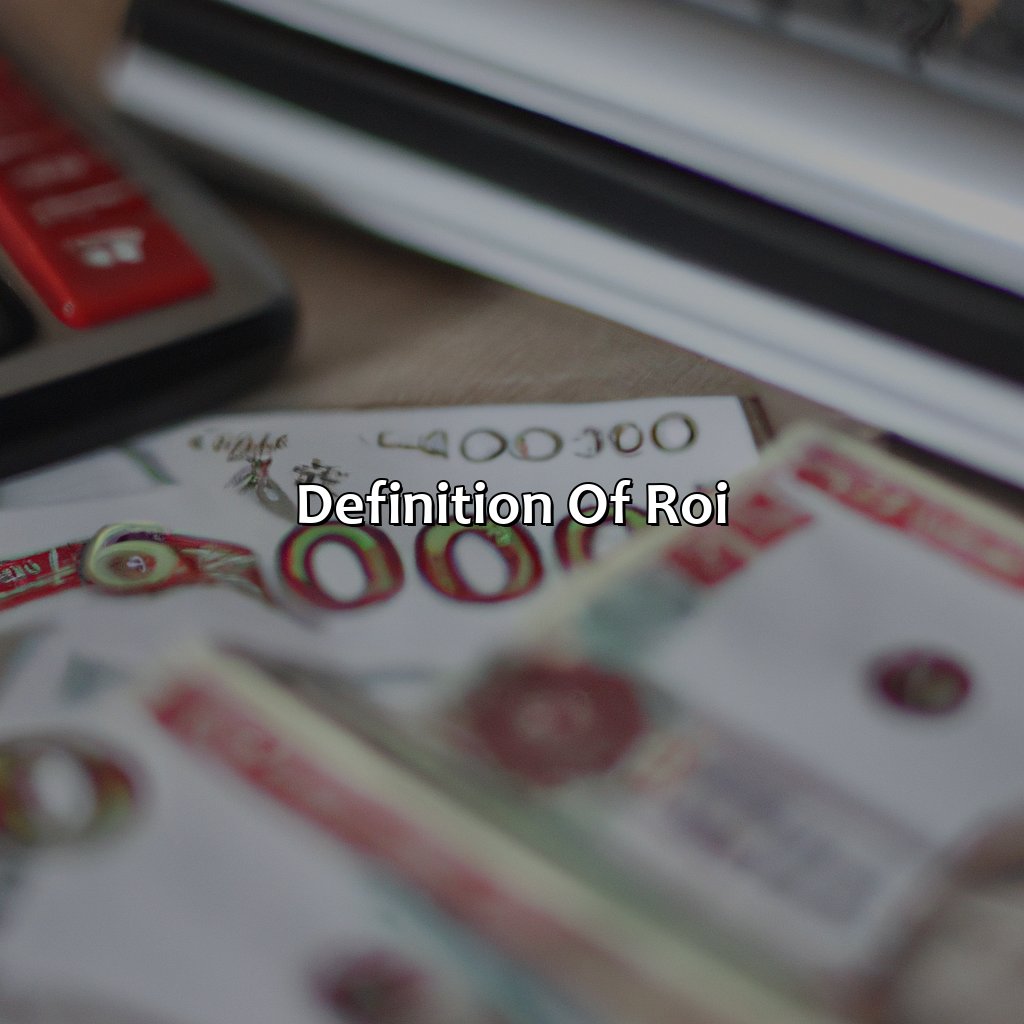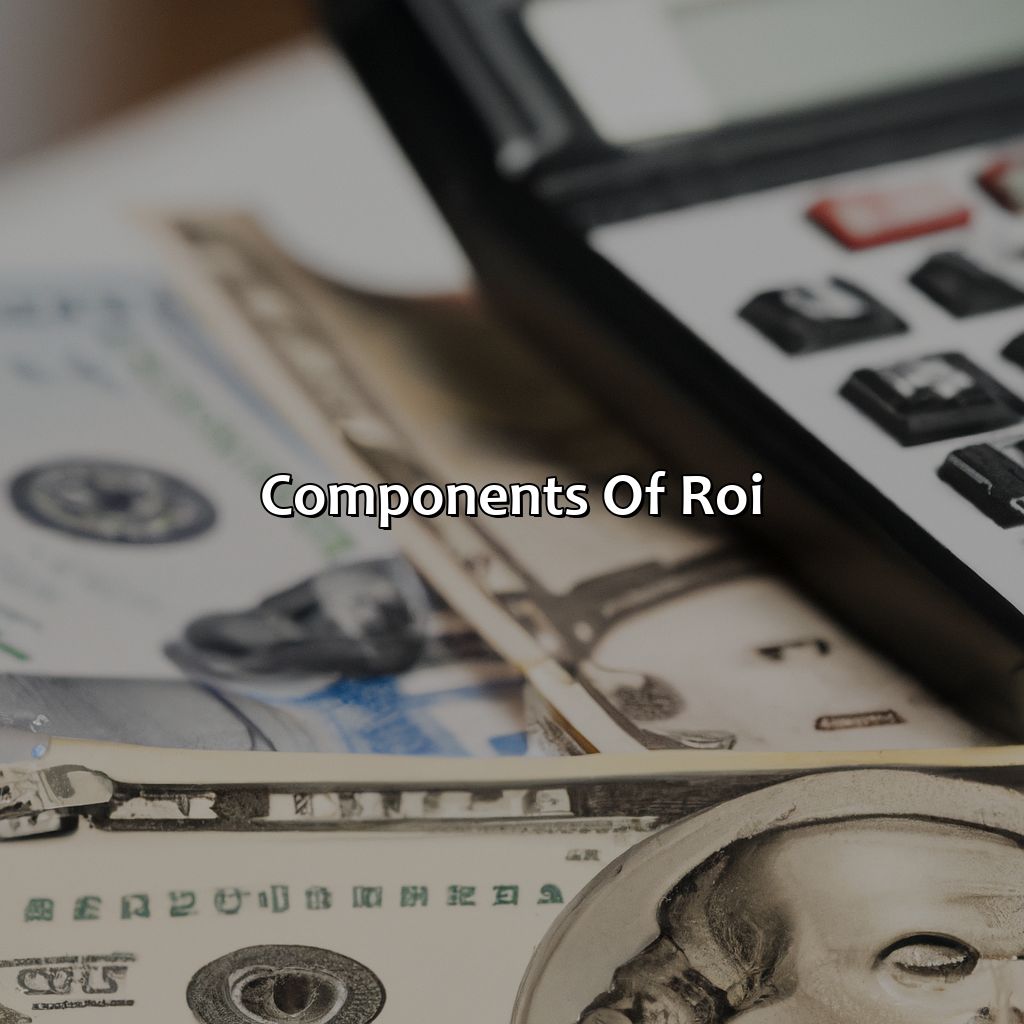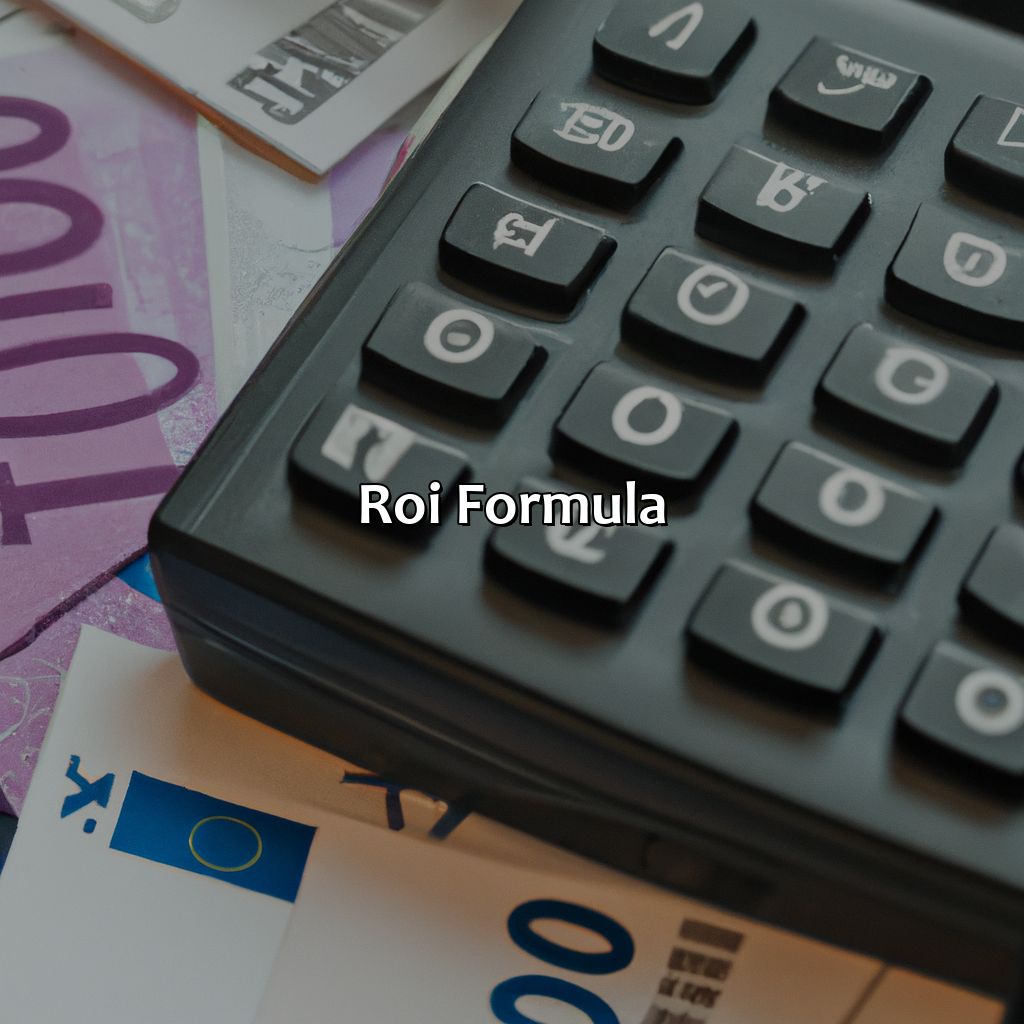What Is Return On Investment (Roi)?
Key Takeaway:
- ROI (Return on Investment) is a financial metric used to measure the profitability of an investment as a percentage of the initial investment.
- The components of ROI include the investment and the gain or return. The investment includes the cost of the asset and any additional expenses related to the investment, while the gain or return is the income generated from the investment.
- The ROI formula is [(Gain from Investment – Cost of Investment) / Cost of Investment] x 100. A positive ROI indicates that the investment is profitable, while a negative ROI indicates that the investment is unprofitable.
Are you looking to calculate your financial return on investment? This blog covers all the basics of Return on Investment (ROI), helping you to make smarter and more profitable decisions. You’ll learn the formula and understand how to use it to maximize your success.
Understanding ROI
ROI: Maximize Your Investment Returns
ROI, or Return on Investment, is a financial metric that measures the profitability of an investment. It is used to evaluate the effectiveness of investments and helps to guide decision-making processes. ROI is calculated by dividing the net profit of an investment by the total cost of the investment. A high ROI indicates that the investment was successful, while a low ROI indicates that the investment was not profitable.
In today’s dynamic business environment, understanding ROI is critical to maximizing your investment returns. By using ROI, businesses can better assess the value of their investments, identify areas for improvement, and make informed decisions about future investments. It is important to note that ROI is not the only metric used to evaluate investments, as it does not account for factors such as risk and opportunity cost.
To ensure success, it is crucial to employ effective ROI strategies. This can include monitoring investments regularly, utilizing data analysis tools, and considering long-term financial goals. By implementing these strategies, individuals and businesses can maximize their ROI and achieve financial success.
According to a recent study by the Financial Times, companies that focus on ROI have a higher probability of achieving sustained growth and profitability. Therefore, it is essential to prioritize ROI as part of your investment strategy.

Image credits: retiregenz.com by James Jones
Definition of ROI
Return on Investment, commonly abbreviated as ROI, is a financial performance measure used to evaluate the efficiency and profitability of investment, compared to its cost. It represents the net gain or loss, relative to the investment cost, expressed as a percentage of the initial investment. ROI is a widely used investment analysis tool, providing insights into the feasibility and attractiveness of investing in a particular project or asset. It serves as a crucial metric for businesses and investors to assess the performance of their investments, helping them to make informed decisions and allocate resources more effectively.
ROI is calculated by subtracting the investment cost from the final value and dividing the result by the investment cost, then multiplying the quotient by 100 to obtain a percentage. For instance, if an investment costs $100,000, and returns $120,000, the ROI is 20%. It indicates that for every dollar invested, the investor generated a return of 20 cents
ROI is often used in conjunction with other financial measures such as net present value, internal rate of return, and payback period to provide a comprehensive overview of investment profitability. Investors typically use ROI to compare multiple investment opportunities and prioritize them based on their potential returns.
Interestingly, ROI is not a new concept, as it has been used since the early days of investment analysis. The first recorded use of ROI dates back to the 1800s when it was used to evaluate the profitability of railroad investments. Since then, ROI has become a standard and widely used metric in the finance and investment field.

Image credits: retiregenz.com by Yuval Arnold
Components of ROI
Return on investment (ROI) is a pivotal metric that helps to evaluate the profitability and efficiency of various investments. The components of ROI encompass the total monetary gain or loss and the time and resources invested.
ROI combines the net profit and the cost of investment to determine the ROI percentage. The net profit consists of the investment return minus the total investment costs, such as maintenance, labor, and materials. Conversely, investment costs include all expenditures associated with the investment.
In addition, the time and resources invested in any given investment must also be considered when evaluating ROI. The duration of time an investment requires to reap the benefits impacts the amount of resources dedicated to it.
A suggestion to improve ROI is to conduct regular evaluations of the investment’s performance to ensure its profitability. It is also worth investing in process optimization, diversification of portfolio, and continually improving the quality of products or services, which enhance ROI in the long term.

Image credits: retiregenz.com by David Arnold
ROI Formula
Return on Investment or ROI Formula is a financial metric used to evaluate the profitability of an investment and is typically expressed as a percentage. It measures the gain or loss relative to the cost of investment. ROI Formula is calculated by dividing the net profit of an investment by the cost of that investment. This information is valuable to businesses in making investment decisions and assessing the effectiveness of campaigns, projects, or strategies.
ROI Formula can help businesses quantify their marketing effectiveness by calculating the ROI on their various marketing channels separately. By doing so, companies can identify their most effective marketing channels and invest more in them while cutting down investments in less effective channels. ROI has become a standard measure for evaluating investments’ profitability because it’s easy to understand, calculate, and compare with other investments.
To increase your return on investment, it is essential to take calculated risks. Investing in cryptocurrency, for example, is one investment opportunity that attracts many people because of its potential high returns. However, it is also a high-risk investment, and one should not invest more than they can afford to lose. A significant increase in ROI can result from implementing new technology, hiring skilled personnel, or expanding your product line.
An oil company invested in its marketing campaign to raise brand awareness and increase sales. They used ROI Formula to calculate the cost-effectiveness of each marketing channel. As a result, they found that their email marketing campaign had an ROI of 44%, while their social media campaign had an ROI of only 12%. Consequently, they decided to allocate more resources to their email marketing efforts. This strategy helped them to achieve a 75% increase in sales.

Image credits: retiregenz.com by Joel Duncun
Importance of ROI
ROI is a crucial business metric that measures the return gained from an investment, which is expressed as a percentage or ratio of initial investment cost. It is an essential performance indicator that helps investors to determine the profitability or efficiency of an investment. By analyzing ROI, investors can make informed investment decisions by comparing the costs and gains of different investment options.
ROI is a valuable tool for business owners to evaluate the impact of their investment decisions and make informed decisions for future investments. Therefore, understanding and calculating ROI is imperative for businesses to optimize their investments and maximize profits.
Calculating ROI involves dividing net profit by the investment cost and multiplying the result by 100, which gives the percentage of return on investment. ROI takes into account the time value of money and inflation rates, making it a reliable metric to evaluate investment performance. Additionally, ROI is a valuable tool for tracking the ROI of marketing campaigns and determining their effectiveness.
Pro Tip – Monitoring and analyzing ROI on a regular basis can help businesses to identify areas where they need to improve their investments and make informed decisions. Therefore, businesses should focus on calculating and monitoring ROI for all their significant investments to optimize their returns.

Image credits: retiregenz.com by Joel Duncun
Limitations of ROI
ROI Limitations: Understanding the Flaws in Measuring Returns
ROI is a powerful metric for gauging the success of financial investments, but it has its limitations. First, it fails to account for non-financial benefits that may be derived from investments, such as increased brand visibility or employee satisfaction. Also, it doesn’t factor in the impact of external factors, such as market volatility or changes in regulations. Another common limitation of ROI is that it’s always retrospective, meaning it only reflects past performance and doesn’t account for future investments that may affect returns.
Furthermore, ROI doesn’t consider the time value of money, which can skew results over long periods. Also, it can be misleading for investments that have a short lifespan or require recurring expenditures, such as marketing campaigns or maintenance costs. Additionally, ROI may not reflect opportunity costs, alternative investments that could have delivered more significant returns.
To make informed investment decisions, it’s essential to recognize the limitations of ROI and complement it with alternative metrics to form a complete investment analysis. Using a combination of metrics, such as internal rate of return and payback period, can provide a more comprehensive view of the potential outcomes and long-term implications of investments.
Investors who overlook the limitations of ROI may miss valuable opportunities that can lead to future growth and profitability. Therefore, it’s crucial to incorporate a more holistic approach to investment analysis and consider all factors that may impact returns to make informed decisions.

Image credits: retiregenz.com by Harry Duncun
Some Facts About Return on Investment (ROI):
- ✅ ROI is a financial metric used to measure the profitability of an investment. (Source: Investopedia)
- ✅ ROI is calculated by dividing the net profit of an investment by the cost of the investment. (Source: The Balance)
- ✅ ROI is usually expressed as a percentage, and a higher ROI indicates a more profitable investment. (Source: Forbes)
- ✅ ROI can be used to compare the effectiveness of different investments or to evaluate the performance of an investment over time. (Source: Business News Daily)
- ✅ ROI is a valuable tool for businesses and individuals to make informed decisions about investing resources. (Source: Entrepreneur)
FAQs about What Is Return On Investment (Roi)?
What is return on investment (ROI)?
Return on investment (ROI) is a performance measure used to evaluate the efficiency of an investment or to compare the efficiency of a number of different investments. ROI measures the return of an investment relative to the cost of the investment.
How do you calculate ROI?
The basic formula for calculating ROI is: ROI = (Gain from Investment – Cost of Investment) / Cost of Investment. The gain from investment can also be referred to as net income or profit.
Why is ROI important in business?
ROI is important in business because it is a measurement of the profitability of an investment. It helps businesses make informed decisions about which investments to pursue and which to avoid. ROI also helps businesses set financial goals and determine the success of their investments.
What is a good ROI?
A good ROI is typically one that is higher than the industry average or the company’s cost of capital. However, what is considered a good ROI can vary depending on the industry and the specific investment. Generally, a return of at least 10% is considered a good ROI.
What are some limitations of using ROI?
One limitation of using ROI is that it does not take into account the time value of money, which means that it does not consider the fact that money in the future is generally worth less than money in the present. Another limitation is that it does not take into account the risk of the investment.
Can ROI be negative?
Yes, ROI can be negative if the cost of the investment is greater than the gain from the investment. A negative ROI means that the investment is not profitable.
